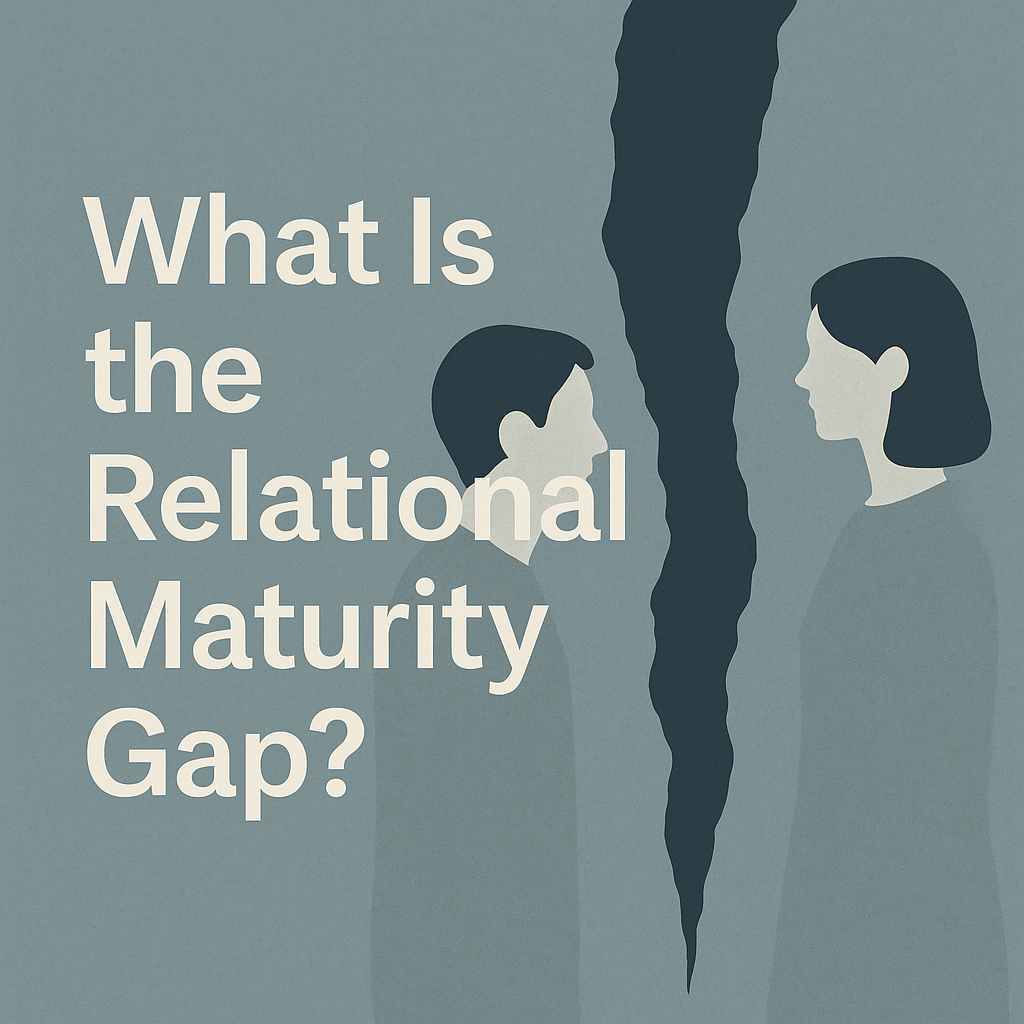🩶 What Is the Relational Maturity Gap?
Introduction
Even caring people can miss each other. A look, a tone, or a pause in conversation can turn warmth into withdrawal.
These moments are rarely malicious. They’re mis-attunements, small but significant mismatches between intention and impact. When these moments go unspoken, they quietly erode safety and trust.
This is what I call the Relational Maturity Gap: the space between how we want to show up in connection and how we actually show up when we’re triggered. It’s not about blame; it’s about awareness. And once you can name it, you can start closing it.
What the Relational Maturity Gap Really Means
Most of us weren’t taught how to stay connected when things get uncomfortable. We learned to please, to fix, or to withdraw, but not to stay grounded and curious in the middle of tension.
When someone says something that hurts, our nervous system moves faster than our awareness. Fear or shame takes the wheel. We defend, disappear, or lash out.
But relational maturity isn’t about perfection. It’s about the capacity to repair after rupture.
The Hidden Pattern Beneath Conflict
The Relational Maturity Gap shows up when we:
assume bad intent instead of naming impact, for example, that made me feel shame
withdraw instead of expressing how we feel, for example, i feel hurt
use words as weapons instead of bridges
It’s not a flaw. It’s an invitation to grow. These moments expose the limits of our nervous system’s capacity for connection. The work isn’t to suppress emotion but to build more range inside it.
Why It’s So Common
In most families, repair wasn’t modeled. We saw conflict avoidance or explosions, rarely the return to calm. Without that blueprint, we confuse withdrawal with self-care and reactivity with honesty.
Relational maturity asks for a third way: the courage to pause, notice, regulate, and then respond.
How to Stay in Your Window of Tolerance
At all times, your attention should rest more on your (autonomic nervous system) state than on your argument.
When your breath shortens or your jaw tightens, pause.
If you speak while flooded, you’re communicating from the amygdala, from fear, not from your prefrontal cortex, where empathy and perspective live.
Excuse yourself early, not to shut down the conversation but to protect the relationship.
From Reaction to Repair
In mature relationships, both people can share their truth safely.
We don’t punish vulnerability. We welcome it.
Instead of: “You’re not listening to me.”
Try: “I notice I feel unheard right now, and I’d like to feel more connected.”
Naming what’s real creates space for repair. It signals emotional responsibility and invites co-regulation instead of blame.
The Practice of Maturity
Relational maturity doesn’t mean you never get triggered. It means you notice it faster, recover sooner, and return to connection with more wisdom each time.
Every rupture is an opportunity to practice repair. Every misunderstanding is an opening to grow.
When awareness, compassion, and courage work together, relationships become a field of growth, not a battlefield of egos.
Somatic Reflection
Pause • Notice & Name • Breathe
– Where am I in my body right now?
– Am I within my window of tolerance?
– Can I choose curiosity instead of defense?
Conclusion
The Relational Maturity Gap isn’t a sign of failure. It’s a sign that you’re growing. Every time you notice the gap, you’re expanding your capacity to hold both love and truth at once.
Growth happens not when we avoid discomfort but when we stay present long enough to understand it. When we learn to meet rupture with curiosity instead of control, we build relationships that are not only safe but alive.
Connect with me for support in closing the relational maturity gap to help you stay connected and hopefully attuned, during conflict.

